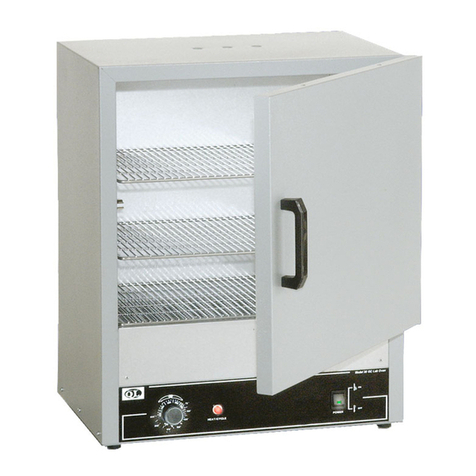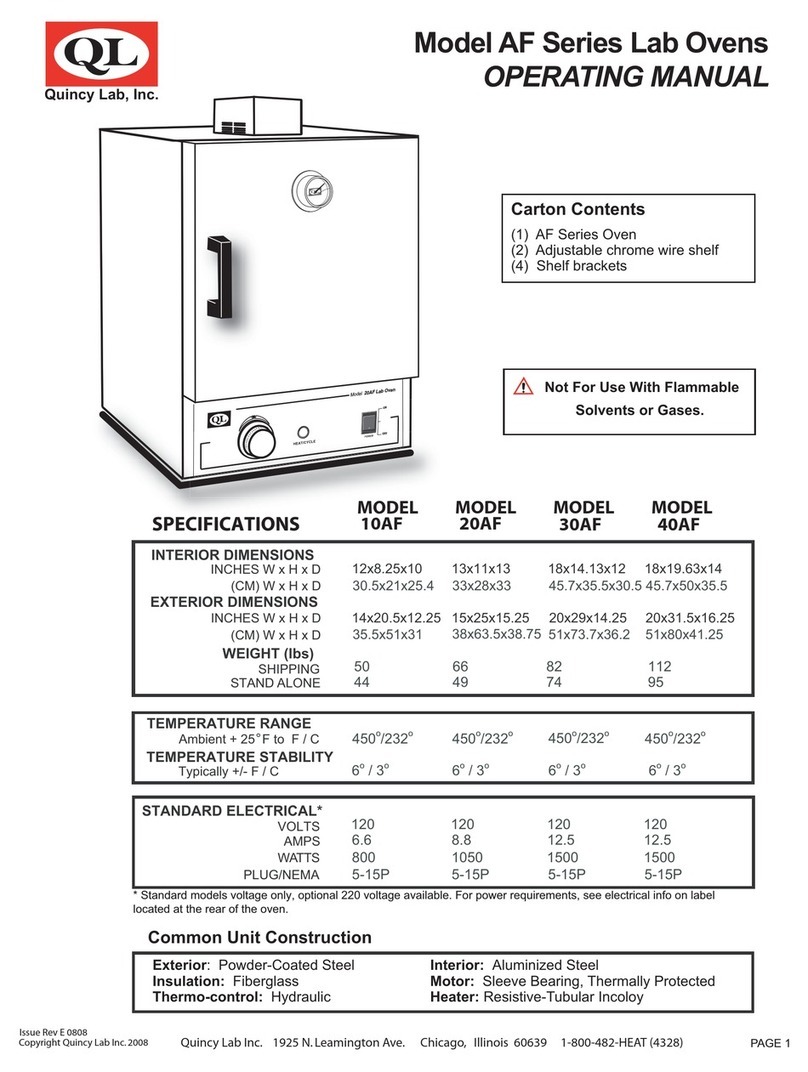
PAGE 4
Maintenance
To clean interior and exterior surfaces, use a damp cloth with or without an all-purpose cleaner. The
acrylic door, (on 140 Models), should only be cleaned using a lint-free cloth. Paper towels can mar the
surface of the acrylic door. Use of any commercial cleansers on the acrylic door will cause crazing and
cracking of the surface of the acrylic door over time. Periodically check the temperature stability (with the unit
empty of contents), by observing the temperature through several cycles of the thermostat. (See also
Important Operational Notes above).
If you have any questions or need technical assistance, please contact Quincy Lab customer support at
Voice: 800-482-HEAT Quincy Lab, Inc.
Fax: 773-622-2282 1925 North Leamington Avenue
Important Operational Notes:
The set point of the thermostat or chamber temperature stability can be affected by changes in ambient
(room) temperature and/or equipment running in close proximity (creating micro climates) or cycling on
the same electrical circuit. Take time to see how unit location or changes in room temperature from
seasonal heating or air conditioning may influence the incubator's set temperature. For best chamber
temperature stability, keep the ambient temperature stable.
The unit's minimum operating temperature is largely determined by ambient temperature. The unit can
operate 2 degrees above room temperature but temperature stability will be degraded. Stability
improves appreciably for settings that exceed ambient by 4 degrees C or better. Also, the lower the
ambient temperature the lower the maximum adjustable operating temperature. Adjusting the
operational temperature range of the unit for non-typical ambient conditions can be done by adjusting
the calibration trim screw located recessed in the shaft, behind the knob dial. If a temperature range shift
is necessary, contact factory for instructions.
Avoid extremely large (in quantity or size), or high-density loads. (FIG 7) This will show by non-uniform
processing and long or impossible "heat-through" times. To help determine a large load's suitability,
use the set-point recovery time (the time it takes for the temperature to recover to the original set
temperature once load is placed), as a guide. To reduce recovery time, reduce load proportionally.
Also, large loads such as a beaker containing 2 liters of solution may require an elevated set
temperature for the solution to reach and maintain a lower target temperature. When possible,
measure large loads or solution temperatures directly with an ancillary thermometer or probe. Probes
can be inserted at top port.
Quincy Lab, Inc. warrants to the original purchaser that this product will be free from defects in material
and workmanship under normal use throughout the warranty period. The standard warranty period for
this instrument is 18 months, (3-year coverage on the heater element), from date of
shipment. Please refer to your invoice or shipping documents to determine the
effective warranty period. This warranty covers parts and labor (labor at factory
only), and shipping cost for replacement parts.
Performance and Chamber Loading (cont.)
Process the smallest possible load the application or workload will permit. For best processing of small
multiples or a single item, adjust one shelf so that the article(s) is centered in the incubator. Avoid
placing articles or media against or within an inch of the walls especially on the lower shelf. Heated air
from the lower plenum openings, designed to travel up the side walls, can have a slightly elevated
temperature from set point and the rest of the chamber.
Tech Support
Limited Warranty


























